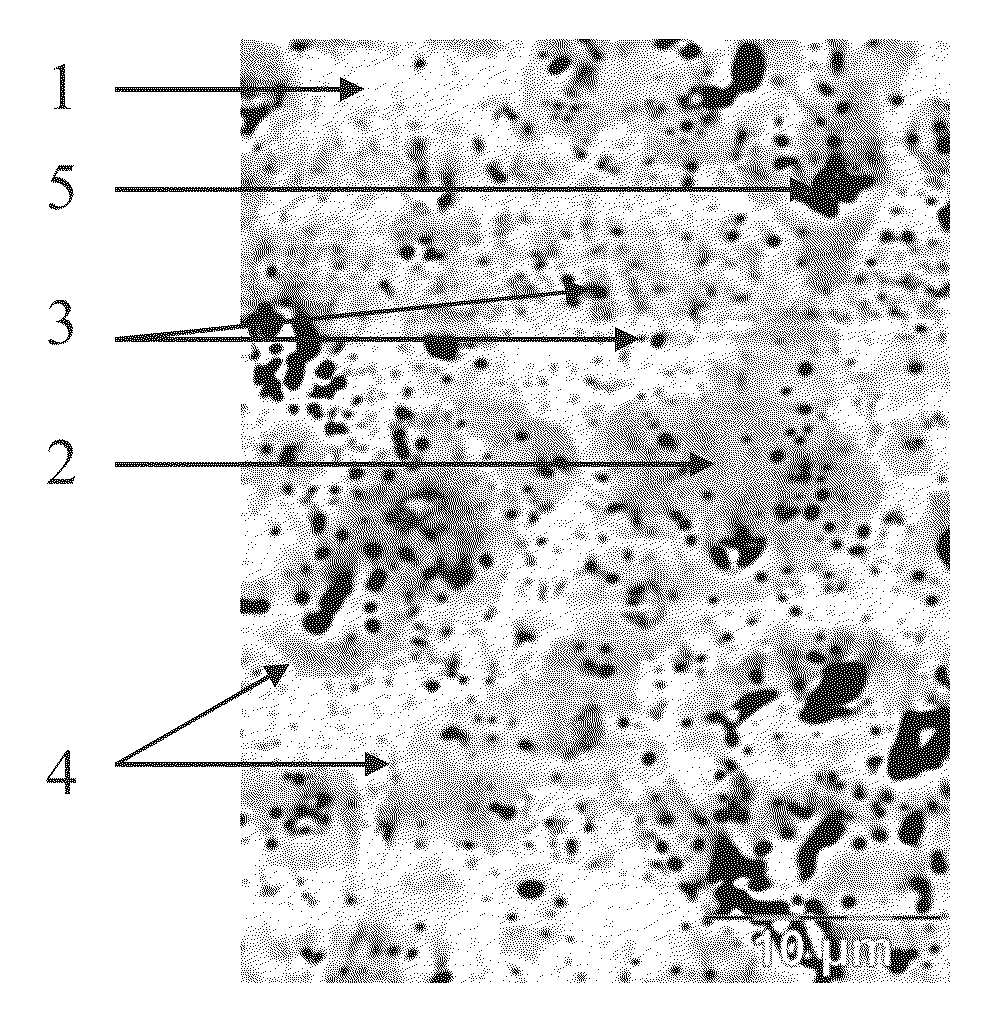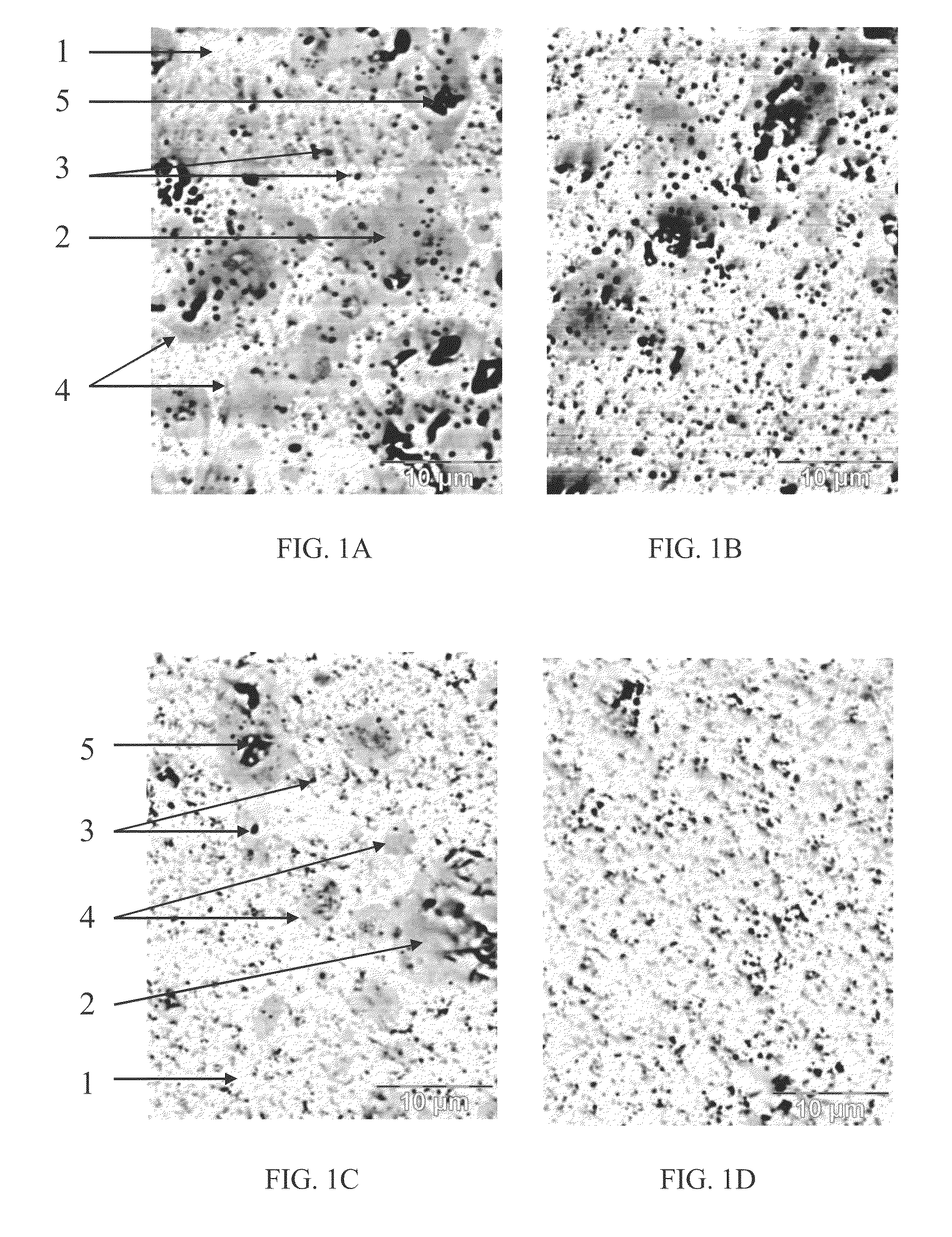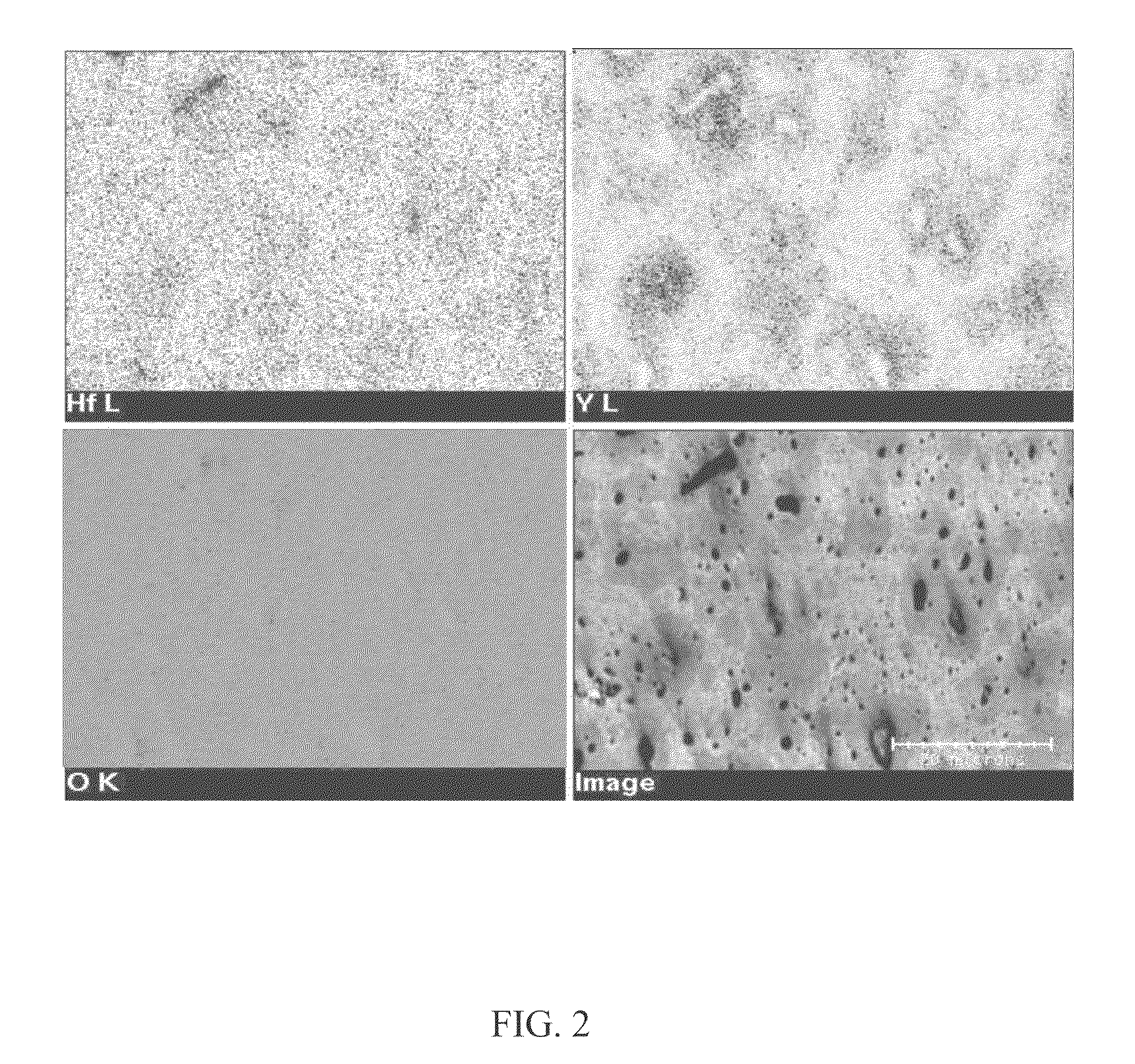Refractory ceramic material having a high solidus temperature, its manufacturing process and structural part incorporating said material
a technology of solidus temperature and refractory ceramics, applied in the field of oxide-based refractory materials, can solve the problems of partial or total core meltdown, difficult implementation, loss of cooling of nuclear fuel, etc., and achieve the effect of measuring compactness
- Summary
- Abstract
- Description
- Claims
- Application Information
AI Technical Summary
Benefits of technology
Problems solved by technology
Method used
Image
Examples
Embodiment Construction
1—Powder Metallurgy Process for the Manufacture of Refractory Ceramic Materials Comprising 1 mol % Y2O3.
[0057]1.1—Dry Mixing of the HfO2 and Y2O3 Powders
[0058]In order to make an HfO2 refractory ceramic material comprising 1 mol % Y2O3, 99.93 g of an HfO2 powder and 1.07 g of a Y2O3 powder, representing 99 mol % and 1 mol % of the final mixture, respectively, were mixed together.
[0059]The hafnium dioxide HfO2 powder available from CEZUS (France), had the following characteristics:
[0060]Purity=99.9% by weight.
[0061]Specific surface (BET)=12.99 m2 / g.
[0062]Dense particle size (BET)=47.6 nm, calculated from the specific surface assuming the grains to be spherical.
[0063]Average grain size=2 μm, as measured by a wet process with a laser granulometer after adding ammonium polymethacrylate as a dispersant (marketed under the brand name DARWAN C).
[0064]Crystal system: mostly monoclinic (density=9.7 g.mc−3).
[0065]The specific surface (BET) and the dense particle size (BET) were determined by ...
PUM
| Property | Measurement | Unit |
|---|---|---|
| solidus temperature | aaaaa | aaaaa |
| solidus temperature | aaaaa | aaaaa |
| size | aaaaa | aaaaa |
Abstract
Description
Claims
Application Information
 Login to View More
Login to View More - R&D
- Intellectual Property
- Life Sciences
- Materials
- Tech Scout
- Unparalleled Data Quality
- Higher Quality Content
- 60% Fewer Hallucinations
Browse by: Latest US Patents, China's latest patents, Technical Efficacy Thesaurus, Application Domain, Technology Topic, Popular Technical Reports.
© 2025 PatSnap. All rights reserved.Legal|Privacy policy|Modern Slavery Act Transparency Statement|Sitemap|About US| Contact US: help@patsnap.com



